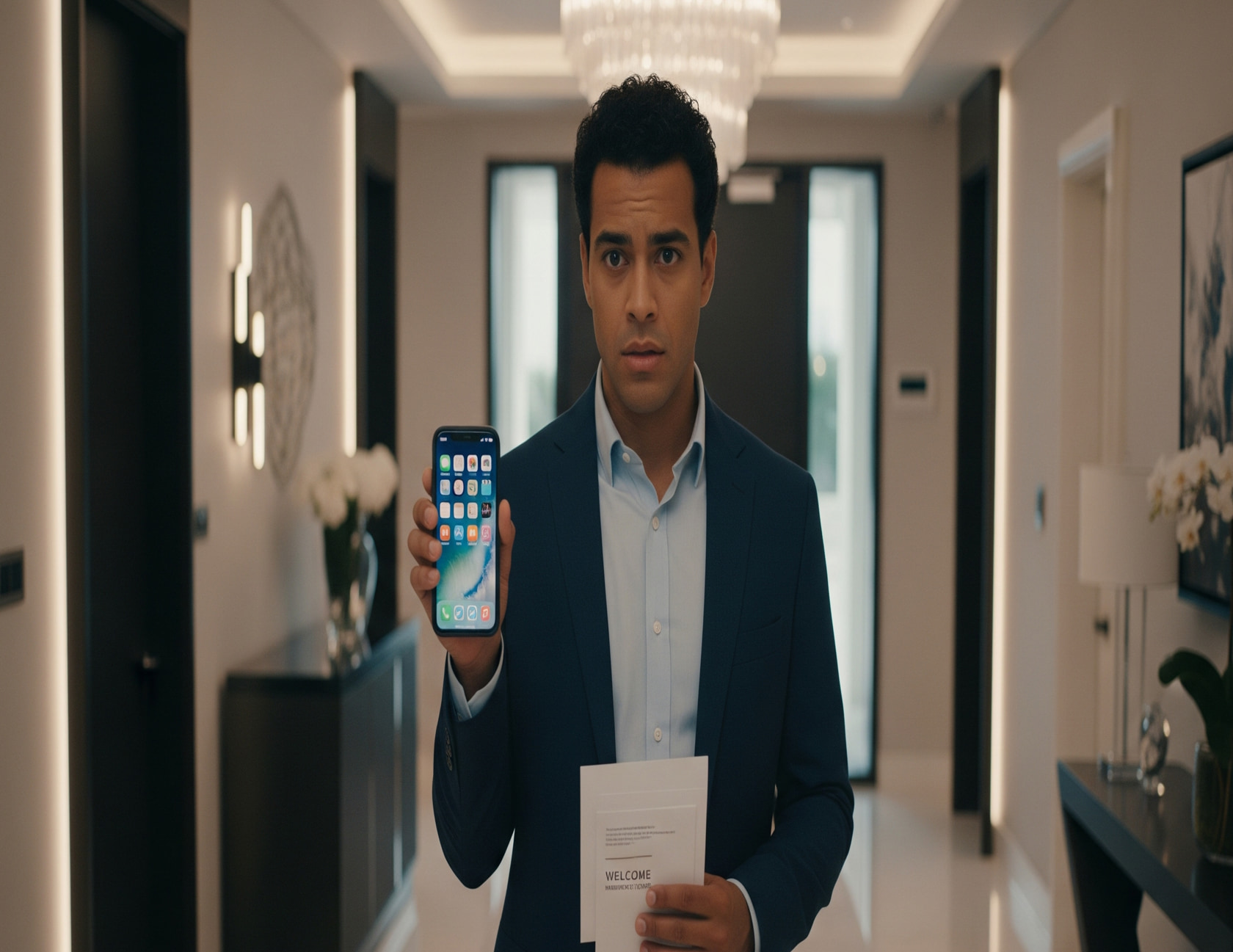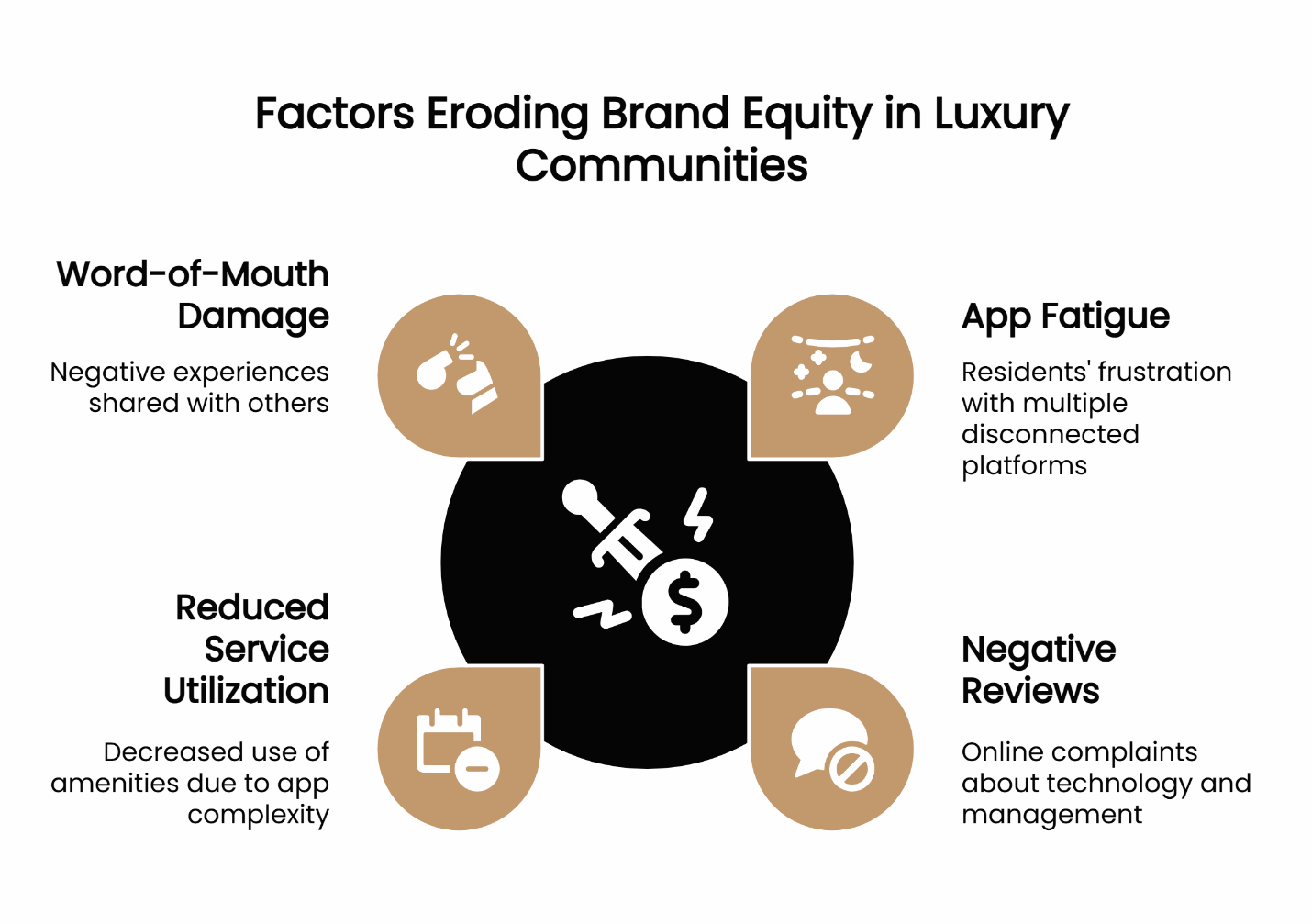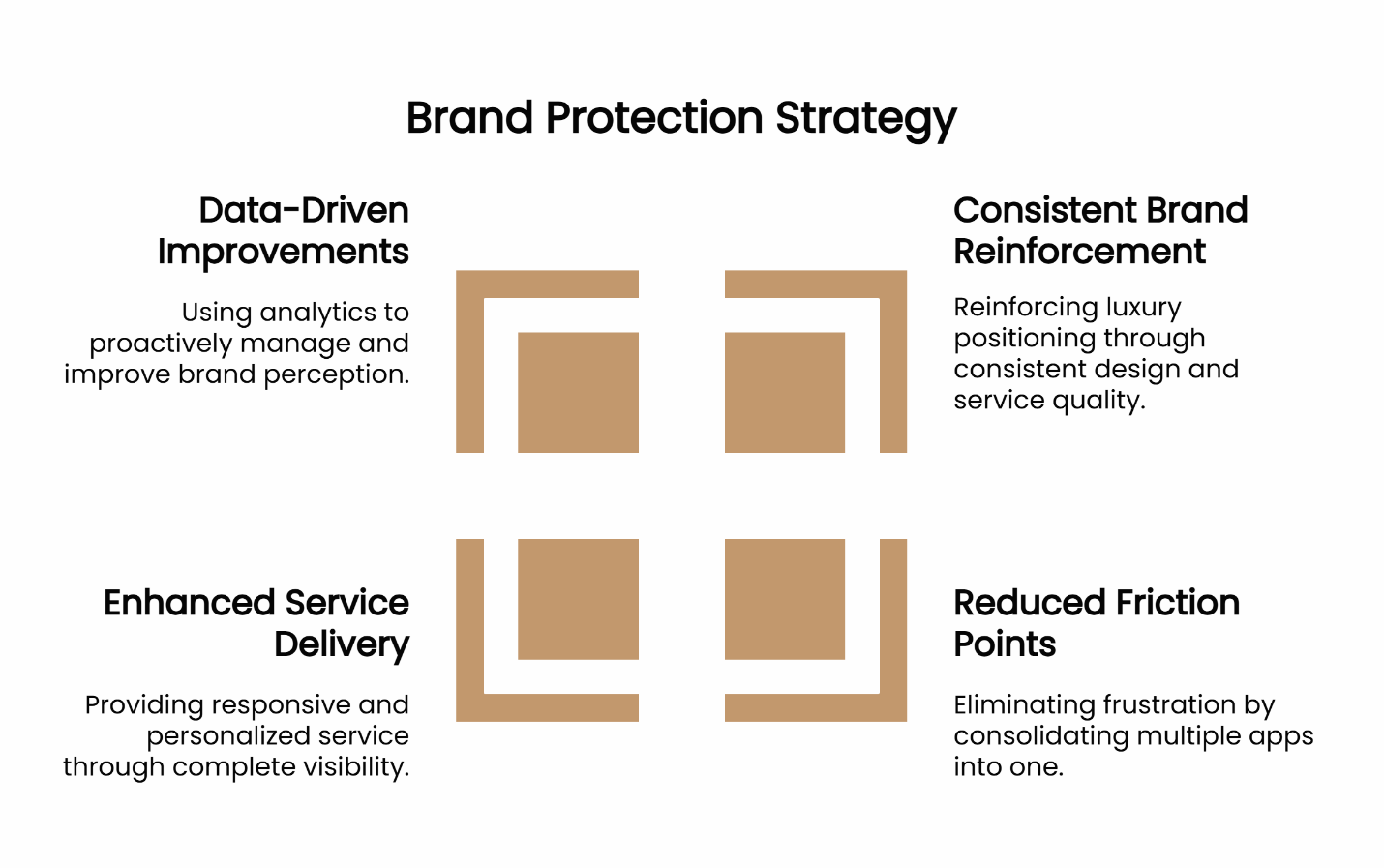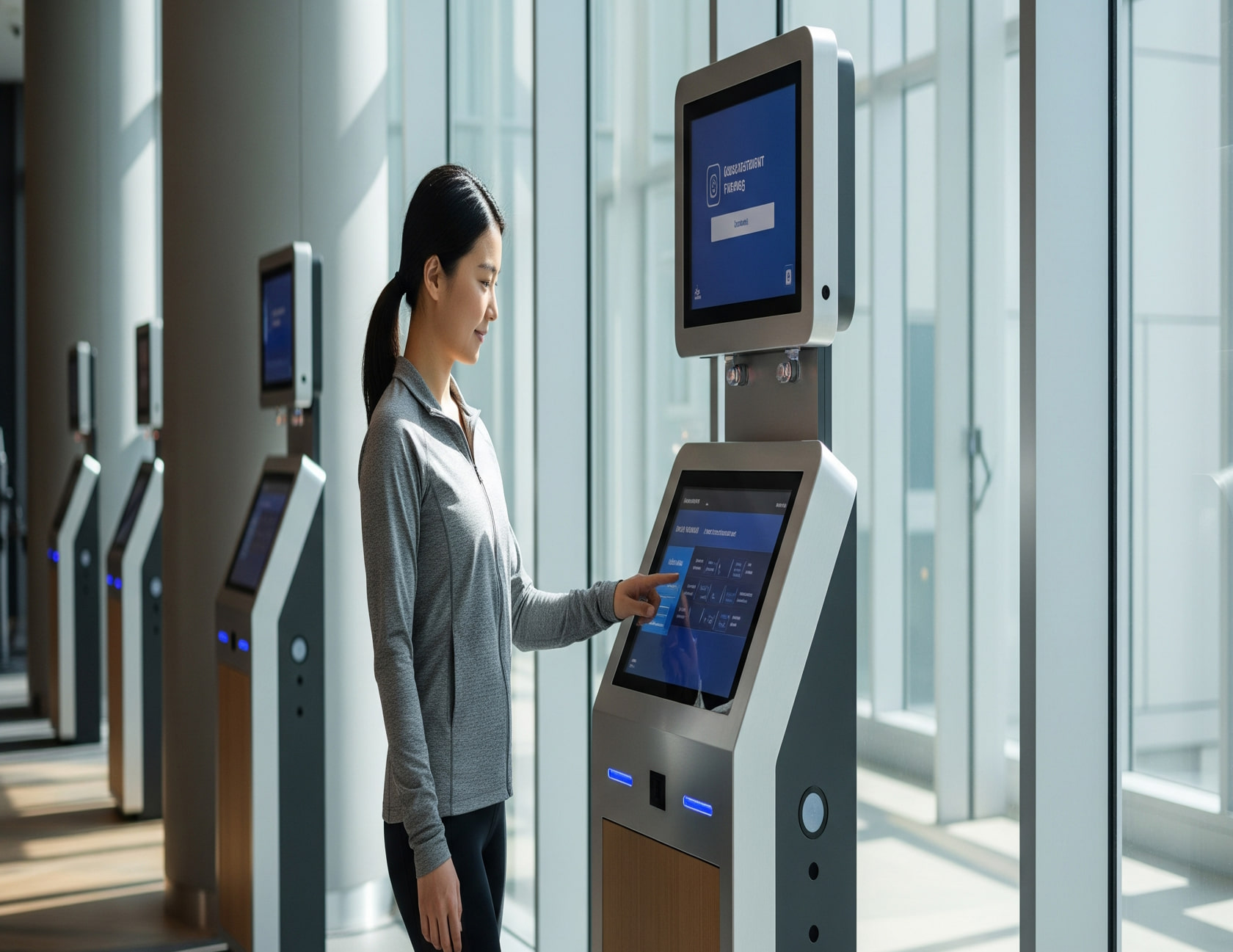
📌 Key Takeaways
Fragmented Technology Directly Undermines Premium Brand Positioning: Class A communities that force residents to juggle multiple apps for rent payments, amenity reservations, and services create a disconnect between luxury promises and digital reality, actively eroding the brand equity that justifies higher rents and sustains asset value.
"App Fatigue" Translates to Measurable Financial Impact: Communities with disjointed digital experiences typically report more resident complaints, reduced service utilization, and negative review patterns that damage word-of-mouth marketing, directly impacting renewal rates and creating cascading costs beyond lost rent.
Every Digital Touchpoint Reflects Management Quality: Residents associate technology frustrations with overall operational inefficiency, making unified digital experiences essential for reinforcing the sophisticated management standards expected in luxury communities.
Strategic Digital Unification Protects Brand Assets: Implementing comprehensive resident experience platforms that consolidate all services into single, branded interfaces enables consistent brand reinforcement, reduces friction points, and supports stronger rent growth through improved resident satisfaction.
Assessment Framework Reveals Hidden Brand Risks: Systematic evaluation of onboarding, daily living, and service touchpoints can identify where fragmented systems create brand damage, with specific risk indicators like residents bypassing digital channels or expressing confusion about multiple platforms.
Communities that recognize digital experience as their new "front door" and invest in unified platforms position themselves advantageously in competitive markets while demonstrating the operational sophistication that justifies premium positioning and drives long-term asset value.
The promise of luxury living extends far beyond marble countertops and concierge services. Today's Class A residents expect their digital experience to mirror the sophistication of their physical environment. Yet many premium communities are inadvertently damaging their brand reputation. They're doing this through fragmented technology that forces residents to juggle multiple apps, creating friction where there should be seamlessness.
When residents choose a luxury lifestyle, every touchpoint becomes a reflection of the community's brand promise. A disjointed digital experience doesn't just frustrate residents. It actively erodes the premium positioning that justifies higher rents and sustains long-term asset value.
The Luxury Promise vs. The Digital Reality
Class A communities position themselves as offering a lifestyle that rivals a 5-star hotel or resort experience. Residents choose these communities because they expect effortless living. Every service should be anticipated and seamlessly delivered.
However, the digital reality often falls short of this promise. Many luxury communities ask residents to download separate apps for rent payments, amenity reservations, package notifications, maintenance requests, and concierge services. This fragmentation creates the opposite of the streamlined experience residents expect when they choose premium living.
The disconnect becomes particularly jarring when residents encounter:
- Multiple login credentials to remember across different platforms
- Inconsistent user interfaces that require learning new navigation patterns
- Scattered information about community events, amenities, and services
- Delayed notifications when systems don't communicate with each other
From a market perspective, this fragmentation signals operational disorganization. This is the opposite of the sophisticated management residents expect from a luxury community.
Business Impact: Communities with fragmented digital experiences typically report significantly more resident complaints related to communication and service coordination. This directly impacts renewal rates and online reputation scores.
How "App Fatigue" Directly Erodes Your Brand Equity

The term "app fatigue" has evolved beyond a minor inconvenience. It now represents a direct threat to brand perception and resident satisfaction in luxury communities. When residents must navigate multiple disconnected platforms to access basic services, their frustration becomes associated with the community's overall management quality.
This frustration manifests in several ways that directly impact brand equity:
Negative Review Patterns: Residents frequently cite "too many apps" and "confusing technology" in online reviews. These complaints appear alongside criticisms of management responsiveness and community organization. This creates a narrative of operational inefficiency.
Reduced Service Utilization: When booking amenities or services requires navigating multiple platforms, residents simply stop using these premium features. This underutilization diminishes the perceived value of the community's offerings.
Word-of-Mouth Damage: Frustrated residents share their experiences with friends and colleagues. They often frame technology issues as indicative of broader management problems.
Technical Note: Modern resident experience platforms can typically integrate with existing property management systems through APIs. This generally allows unified access without requiring complete system replacement or compromising data security.
The Hidden Costs of a Disconnected Resident Journey
Beyond immediate frustration, fragmented digital experiences create cascading effects throughout the resident lifecycle. Each disconnected touchpoint represents a missed opportunity to reinforce the luxury brand promise. It also builds cumulative negative sentiment.
Consider the financial implications. Acquiring new residents costs significantly more than retaining existing ones. When digital friction contributes to non-renewals, the impact extends beyond lost rent. It includes marketing costs, vacancy periods, and lease-up expenses.
The operational costs compound as well. Property management teams spend additional time troubleshooting technology issues and explaining different systems. They also manage coordination between platforms that should communicate seamlessly.
A Framework for Auditing Your Digital Brand Experience
To assess whether your current digital ecosystem supports or undermines your brand positioning, evaluate each stage of the resident journey. Use this comprehensive framework:
Onboarding: The First (and Most Critical) Impression
Assessment Questions:
- Do new residents receive a single, branded welcome experience, or multiple platform introductions?
- Can residents complete move-in documentation, schedule service elevator time, and access community information through one interface?
- Does the onboarding process reinforce the luxury positioning established during leasing?
Brand Risk Indicators: Multiple welcome emails from different systems. Residents asking staff to explain various apps. Confusion about where to find specific information.
Daily Living: Seamlessness as an Amenity
Assessment Questions:
- Can residents book amenities, request services, and communicate with the management team through a unified platform?
- Do residents receive consistent branding and messaging across all digital touchpoints?
- Are residents able to access neighborhood perks and community events without switching between applications?
Brand Risk Indicators: Residents bypassing digital systems to call the office. Low amenity utilization despite high-quality facilities. Complaints about "too much technology."
Service & Support: Turning Problems into Trust
Assessment Questions:
- Can residents submit maintenance requests and track progress through the same platform they use for other services?
- Do service interactions reinforce the community's commitment to responsive, high-quality management?
- Are residents able to provide feedback that demonstrates management's commitment to continuous improvement?
Brand Risk Indicators: Maintenance requests submitted via phone instead of digital channels. Residents expressing frustration with response times or communication gaps.
Day-to-Day Application: Communities using unified platforms often experience notably faster resolution of service requests. This typically happens because property management teams can access complete resident interaction history and preferences in one system. This enables more personalized and efficient responses.
"The most successful luxury communities understand that technology should be invisible to residents—it should enhance their lifestyle without requiring them to think about it."
The Strategic Solution: Unifying the Experience to Protect the Brand

The strategic response to fragmented digital experiences involves implementing a comprehensive resident experience platform. This consolidates all resident-facing technology into a single, branded interface.
This approach offers several brand protection benefits:
Consistent Brand Reinforcement: Every digital interaction becomes an opportunity to reinforce the community's luxury positioning. This happens through consistent design, messaging, and service quality.
Reduced Friction Points: Eliminating the need to switch between multiple apps removes sources of resident frustration that can damage brand perception.
Enhanced Service Delivery: Unified platforms typically enable more responsive and personalized service. Property management teams have complete visibility into resident interactions and preferences.
Data-Driven Improvements: Consolidated analytics generally provide insights into resident behavior and satisfaction. This enables proactive brand management.
The business implications can be significant. Communities that implement unified digital experiences often see improved renewal rates and higher online review scores. They also frequently experience increased utilization of premium amenities. These factors support stronger rent growth and asset value appreciation.
From a portfolio perspective, standardizing on a unified platform typically creates operational efficiencies. It also helps ensure brand consistency across multiple communities. This becomes particularly valuable as organizations scale and seek to maintain service quality standards.
Your Digital Front Door is Your Brand
The digital experience has become the new front door to luxury communities. Just as communities invest in impressive lobbies and professionally trained concierge staff, the digital interface requires the same attention. Brand consistency and service excellence are essential.
Communities that recognize this shift and invest in unified digital experiences position themselves advantageously in an increasingly competitive market. They demonstrate operational sophistication while delivering the seamless lifestyle experience that justifies premium positioning.
The framework provided here offers a systematic approach to evaluating current digital brand risks. Use it to identify opportunities for improvement. Assess whether your technology stack supports or undermines the luxury promise your community represents.
Looking ahead, this understanding of digital experience as brand protection becomes even more critical. The industry continues to evolve toward portfolio-level leadership roles where brand consistency across multiple communities becomes paramount. The communities that master this integration today will set the standard for luxury multifamily management tomorrow.
For executives ready to transform fragmented digital experiences into cohesive brand assets, the path forward involves partnering with platforms designed specifically for luxury communities. Schedule a demo to explore how unified technology can protect and enhance your brand while delivering the seamless resident experience that drives long-term asset value.

.avif)


